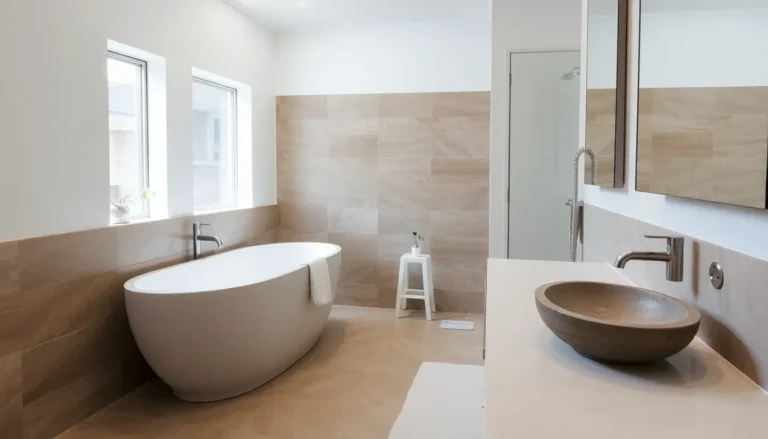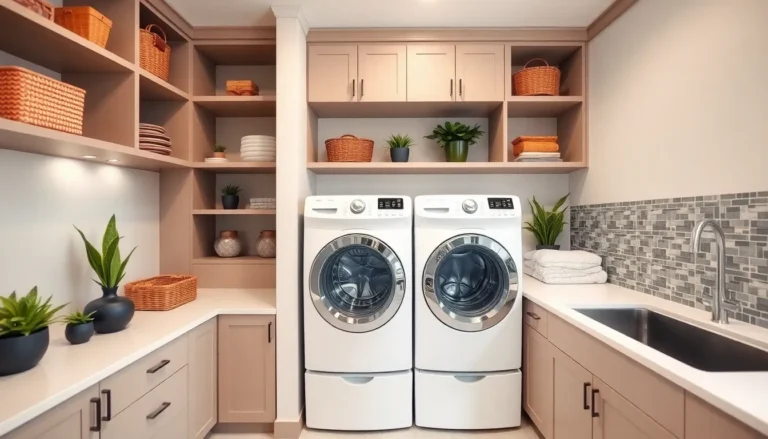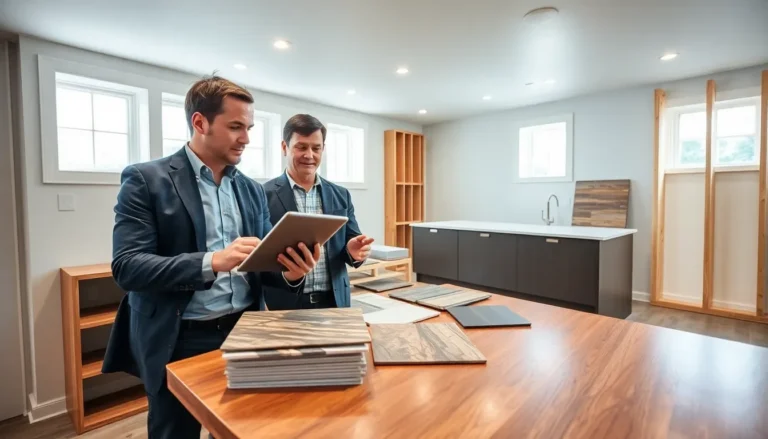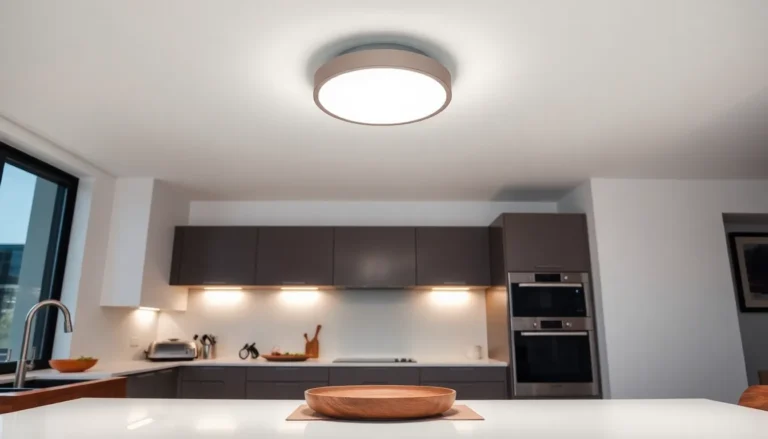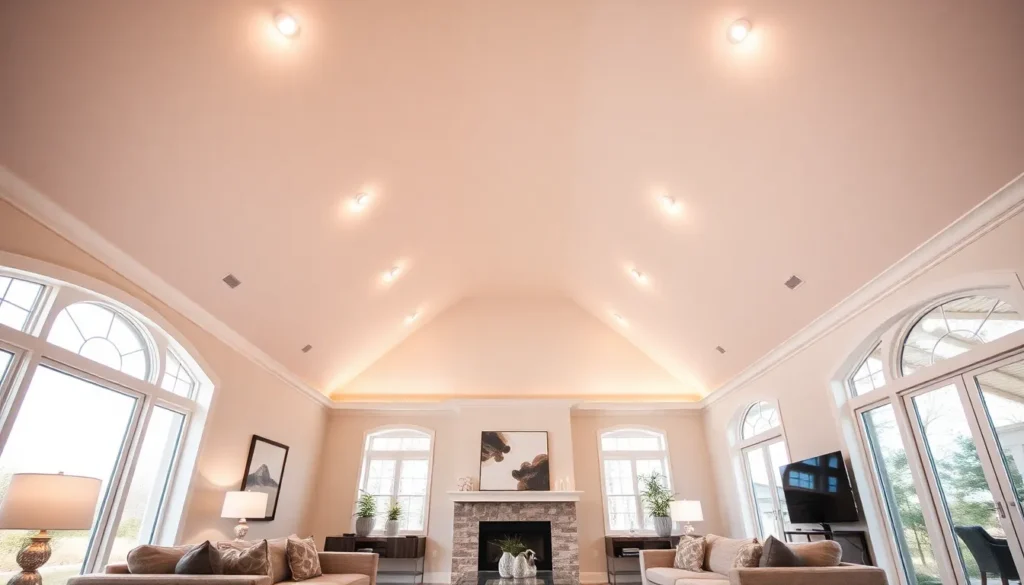Table of Contents
ToggleWhen it comes to transforming a room into a captivating space, vaulted ceilings and recessed lighting are a match made in heaven. Picture this: a stunning, airy room with lighting that enhances every curve of your ceiling. Yes, please. But, navigating the world of vaulted ceiling recessed lighting can feel a bit daunting. Fear not. This guide will not only brighten your understanding but also light the way to your ultimate design goals. Let’s jump into the ins and outs of making your vaulted ceilings shine.
Understanding Vaulted Ceilings
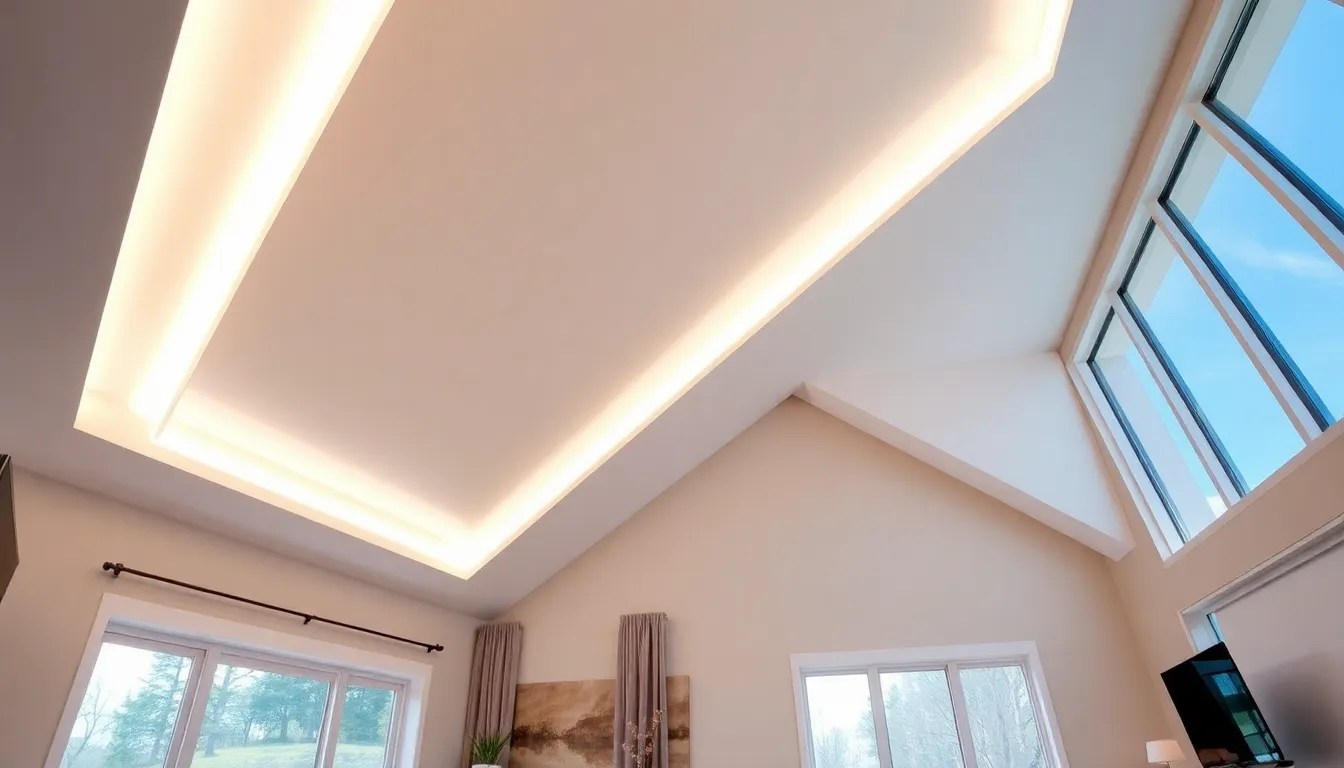
Vaulted ceilings are architectural features designed to create an illusion of increased height. Unlike traditional flat ceilings, vaulted designs rise dramatically from one side of the room to the other, often sloping upwards. They often come in various styles, from simple to highly ornate, and they serve as a focal point for any space. Understanding the structure can provide valuable insight when planning recessed lighting. The unique angles and heights create an opportunity to highlight architectural elements while maximizing light efficiency.
Advantages of Vaulted Ceilings
Elegance is just the tip of the iceberg when it comes to the benefits of vaulted ceilings. They provide a feeling of spaciousness, which is particularly valuable in smaller homes. This grandeur can make even the coziest dining nook feel like a grand banquet hall. Also, vaulted ceilings improve ventilation, allowing for better airflow, which can be a godsend during hot summers. And let’s not forget about the natural light. Those higher ceilings invite an abundance of sun during the day, creating bright, cheerful spaces. But, even the most beautiful vaulted ceilings need the right lighting to showcase their splendor.
Choosing the Right Recessed Lighting
Selecting the appropriate recessed lighting involves more than just picking fixtures that look good: it’s about understanding the type of light you want to achieve. For vaulted ceilings, adjustable or gimbal recessed lights work wonderfully. They allow homeowners to direct the light onto focal points like art pieces or architectural features. Also, consider color temperature. Warm white lights (3000K) create a cozy atmosphere, whereas daylight LEDs (5000K) provide a more vibrant, airy feel. Eventually, the right choice balances functionality and aesthetic appeal.
Placement and Spacing for Recessed Lights
Placement can make or break the ambiance of your space. A good rule of thumb is to space the lights about four feet apart to avoid dark spots. But, when dealing with vaulted ceilings, the height plays a crucial role. The lights should be positioned about 2 to 3 feet from the walls to effectively illuminate the sloped areas of your ceiling. Also, think about layering your lighting. Combine recessed lights with pendants or wall sconces to create visual interest and enhance the room’s character.
Installation Tips for Recessed Lighting
Installing recessed lights in a vaulted ceiling can be slightly trickier than standard installations. Consider hiring a professional if the task seems overwhelming: safety should always come first. For those who are hands-on, start by turning off the power. Measure and mark the locations where you’ll install the fixtures. If you’re working with insulation, use IC-rated fixtures to ensure safety. Double-check the wiring to accommodate your chosen wattage. Once everything is lined up, it’s time to cut the holes and tuck those lights in place.
Maintenance and Upkeep
Maintaining recessed lighting in vaulted ceilings requires a bit of diligence. Dust can accumulate over time, dimming your fixtures’ brilliance. Regularly clean the lenses with a soft cloth to keep them sparkling. If flickering occurs, it may indicate that a bulb is nearing the end of its life or that it needs a simple adjustment. Periodically check wiring and connections, especially if you notice any issues. Keeping everything in tip-top shape enhances the longevity and performance of your beautiful lighting.


